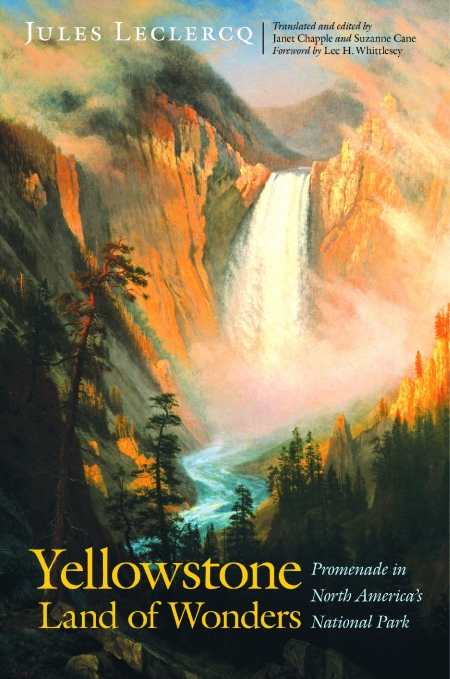Yellowstone, Land of Wonders
Promenade in North America's National Park
Nineteenth century narrative takes us back to Yellowstone’s days of discovery with poetic language evoking the high country.
Jules Leclercq explored Yellowstone by horseback and foot during a ten-day trip in 1883. Yellowstone, Land of Wonders: Promenade in North America’s National Park is the translation of his account of this trip. His voice, one of primarily a travel writer in his native Belgium, is described by Lee H. Whittlesey, former historian at Yellowstone National Park, as accurate enough to “contain clues to the origins of Yellowstone’s place names.” Any nature scholar interested in provenance or the origins of the naming of landscapes will find in Janet Chapple and Suzanne Cane’s translation a welcome addition to the genre. Similarly, the notes—a collaboration between Whittlesey, Chapple, and Cane—will be useful to scholars eager to utilize the book to expand Leclercq’s contribution to American nature and travel writing.
1883 was a seminal year for Yellowstone. That summer, the Northern Pacific Railroad extended its reach into the park, opening it for the first time to mass tourism. That same year, the US president, Chester A. Arthur, and other notable figures from Washington, DC, would visit the park, further increasing its popularity.
Leclercq’s twenty concise chapters follow the nineteenth century style of including a brief list of chapter contents in the heading before the text. His poetic language will evoke the high country for those intimate with it, “all her alpine beauties, verdant valleys, forests, canyons, lakes, waterfalls, rushing streams, and, as sublime frames for these enchanting tableaux, haughty mountains whose eternal diadems of snow sparkle under the pure and luminous sky of these high elevations.” Leclercq’s comparison of Yellowstone to Iceland’s volcanic geology, a region he also wrote about extensively in his book La Terre de Glace (The Land of Ice) provides a touchstone throughout the narrative. For anyone who has taken a thermal bath in a mountain hot spring, the recount of his bath at Mammoth Springs will conjure the envy and appreciation of any weary high country hiker who happens upon such a place and partakes of the healing waters.
The book contains forty-three illustrations, notable because the images are reproduced from wood engravings, “cut in the nineteenth century by French artists copying images from photographs, paintings, or drawings made by men who had visited Yellowstone.” Accompanied by bibliographical information about the contributing artists, this section provides a nice addition for those interested in the material culture associated with iconic landscapes.
Reviewed by
Kai White
Disclosure: This article is not an endorsement, but a review. The publisher of this book provided free copies of the book to have their book reviewed by a professional reviewer. No fee was paid by the publisher for this review. Foreword Reviews only recommends books that we love. Foreword Magazine, Inc. is disclosing this in accordance with the Federal Trade Commission’s 16 CFR, Part 255.

